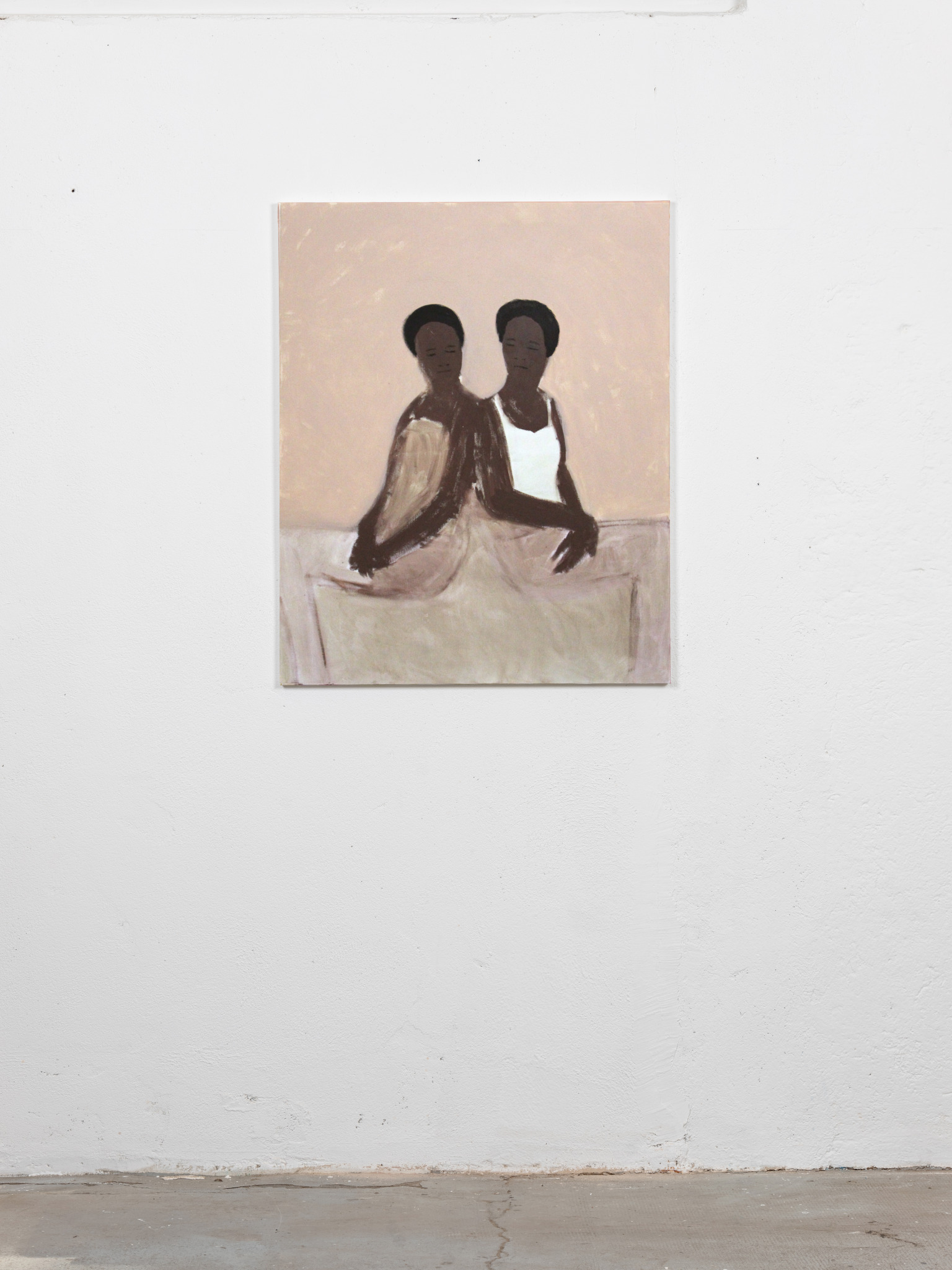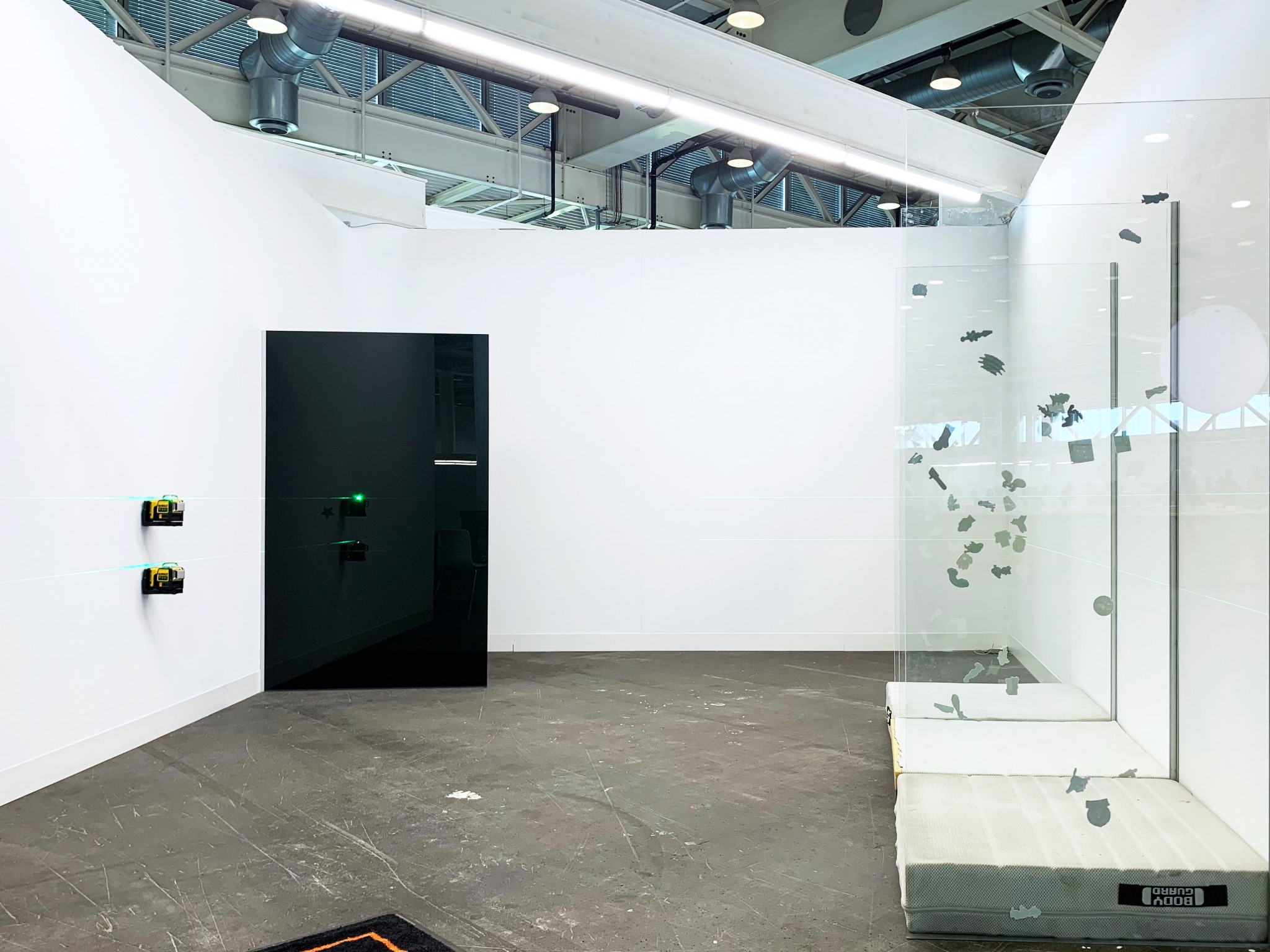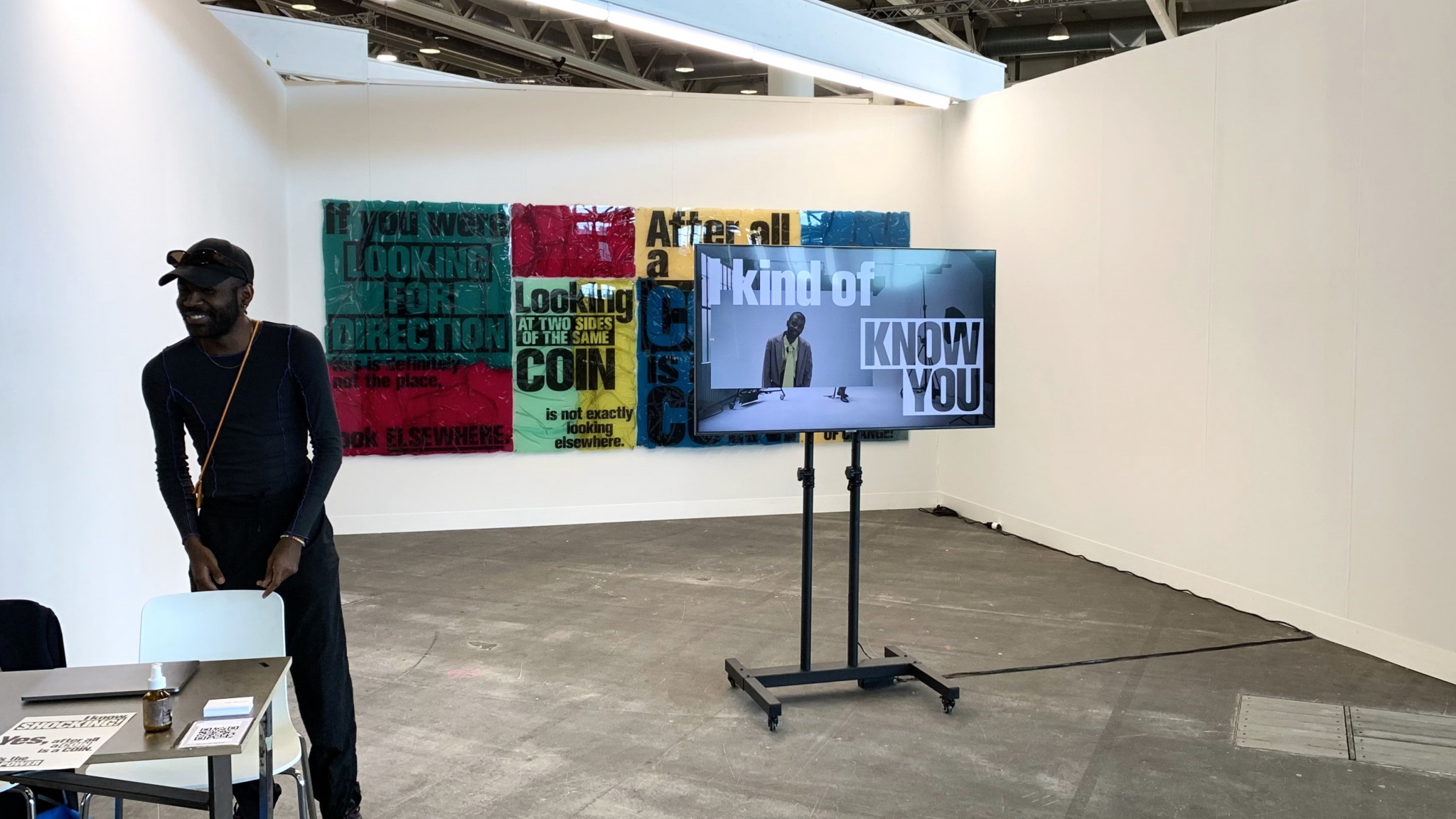Four picks from Liste 2022
Four highlights from this year’s edition of Liste, Basel’s great historical fair for emerging artists and galleries
In the year of the return to near-normal sanitary conditions, and despite the world crisis triggered by the invasion of Ukraine, Liste has proven to be in excellent health, also due to the resources brought in by the Foundation for the Promotion of Contemporary Art Basel, the fair’s new owner. The architecture – designed last year by Belgian firm OFFICE Kersten Geers David Van Severen i.c.w. Richard Venlet – stood out. As difficult as a fair dedicated to galleries and emerging artists can be for the lay audience, the idea of placing the booths along a single circumference worked perfectly. In fact, Liste is the first art fair in the world to have nearly eliminated the hierarchy problem that the traditional grid layout dictates. Here, everything is at once center and periphery, as it should be when you want to offer everyone the same opportunities for success. Then Messeplatz completes the picture.
[For Liste’s approach to fairs and their response to the pandemic, here is our 2020 interview with Joanna Kamm, director of Liste. Ed.]
Nevine Mahmoud at Soft Opening
Soft Opening, a gallery founded in 2018 in London by curator Antonia Marsh, exhibited rising star Nevine Mahmoud (born 1988, London). Her resume already includes major venues such as Moca Los Angeles (2016), the Yuz Museum in Shanghai (2018), the Arnaldo Pomodoro Foundation in Milan (2021), Simon Lee Galleries (2019) and White Cube (2017). Last year Mahmoud had his first solo museum show at the Los Angeles Municipal Art Gallery. The works she exhibited at Liste this year are fragments of a single human body lying on steel supports that bring the series into the semantic realm of (cosmetic?) surgery. The project is titled “foreplays,” after the artist’s solo shows at M + B gallery in 2018 and 2022. But the eroticism in question seems to be about the materials with which the works are composed, rather than the dissected body of which they are a part.

Gregory Olympio at blank
Gregory Olympio was born in 1986 in Lomé, Togo. blank has devoted its booth to his work at Liste. The kind of painting Olympio has chosen to pursue is both sophisticated and brutal. On the one hand, there is a style determined by very few elements, that is, flat, voluminous colors spread to shape subjects that occupy the scene entirely. The graphic sign is often an accident that happens to give identity to something that would otherwise remain undefined. On the other hand, there is a way of representing reality that is purely instinctive and absolutely straightforward. If things are what they are, then painting is also what it paints.

David Moser at Neue Alte Brücke
The booth of Neue Alte Brücke features a solo show of Frankfurt-based, Städelschule student David Moser (born 1993, Zurich). Three glass panes installed perpendicular to the wall form secluded yet transparent vertical spaces to fit a human body; they resemble showers, whose plates are pieces of a worn out mattress, stains included. These booths within the booth are sleek, but rendered warm with stickers and the human presence suggested by the dirt on the mattresses. Opposite to that in the show is another space, this time partitioned by a black pane, which cuts the light coming from two laser levels; we learned they were installed 12 inches apart from each other–the size of the ideal penis according to some. Moser’s presentation subtly brings in human narratives through a fine composition of otherwise unemotional objects.

Ndayé Kouagou at Nir Altman
The solo presentation of Ndayé Kouagou (born 1992, Montreuil) at Nir Altman is a solid blend of mediums. The Paris-based artist, whose work has been featured in venues such as Lafayette Anticipations, Wiels, Centrale Fies, and T293, brings together performance, text, video, and painting. His piece A Coin is a Coin shows himself in a video reciting his own script of wisdom to the viewer with great wit. At the back of the booth, four paintings of plexiglass sandwiched fabric present texts that hint at this script, with phrases that relate to each other such as “If you were looking for direction, this is definitely not the place, look elsewhere,” and “Looking at two sides of the same coin is not exactly looking elsewhere.” An ironic declaration ends the series by mimicking inspirational, self-help lingo: “Change is key, key to where though? Key to a place of change.” Quote paintings from the Pictures Generation come to mind, although Kouagou’s work is not so much indebted to any art historical reference as it is to his own script.

October 5, 2022
